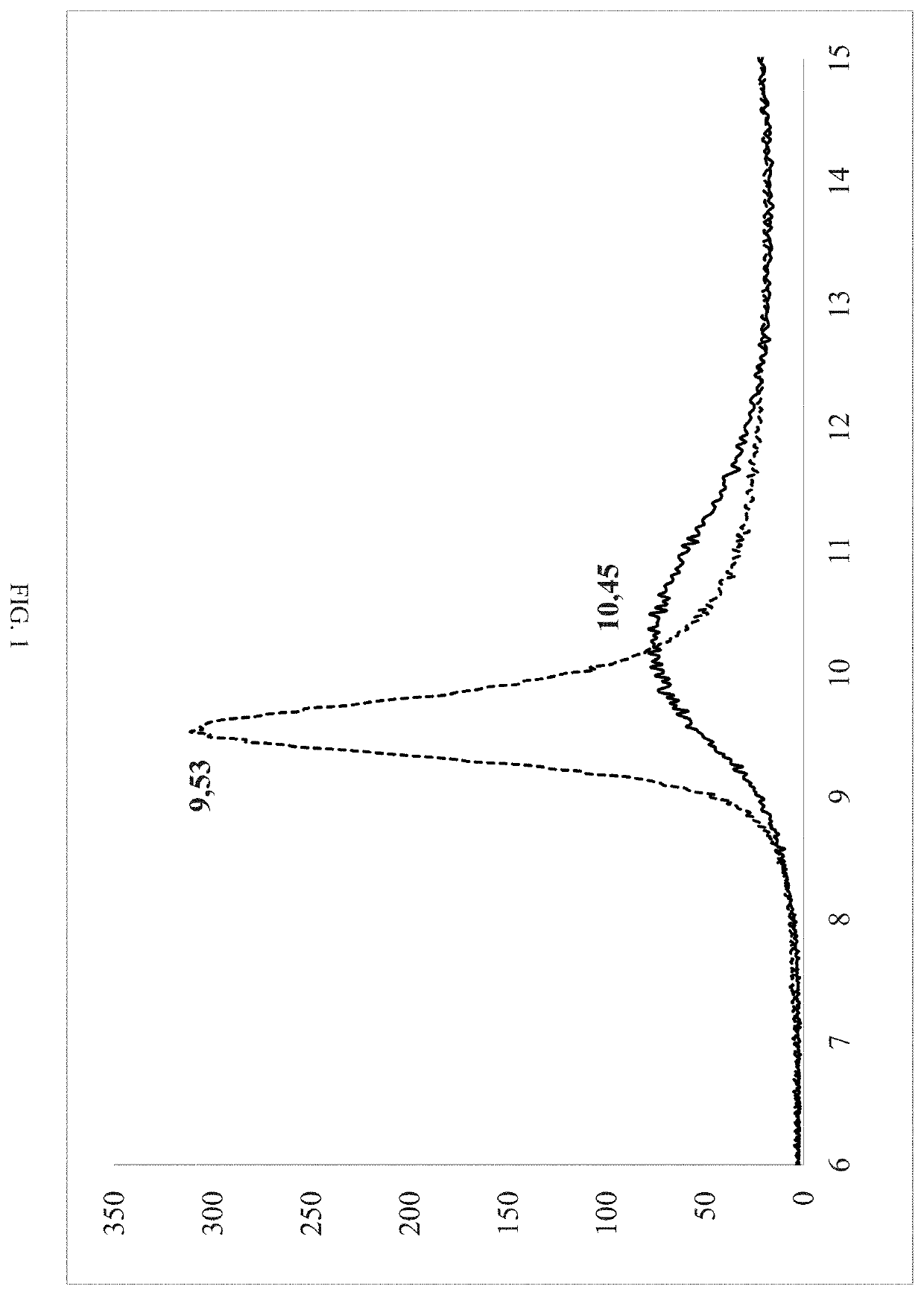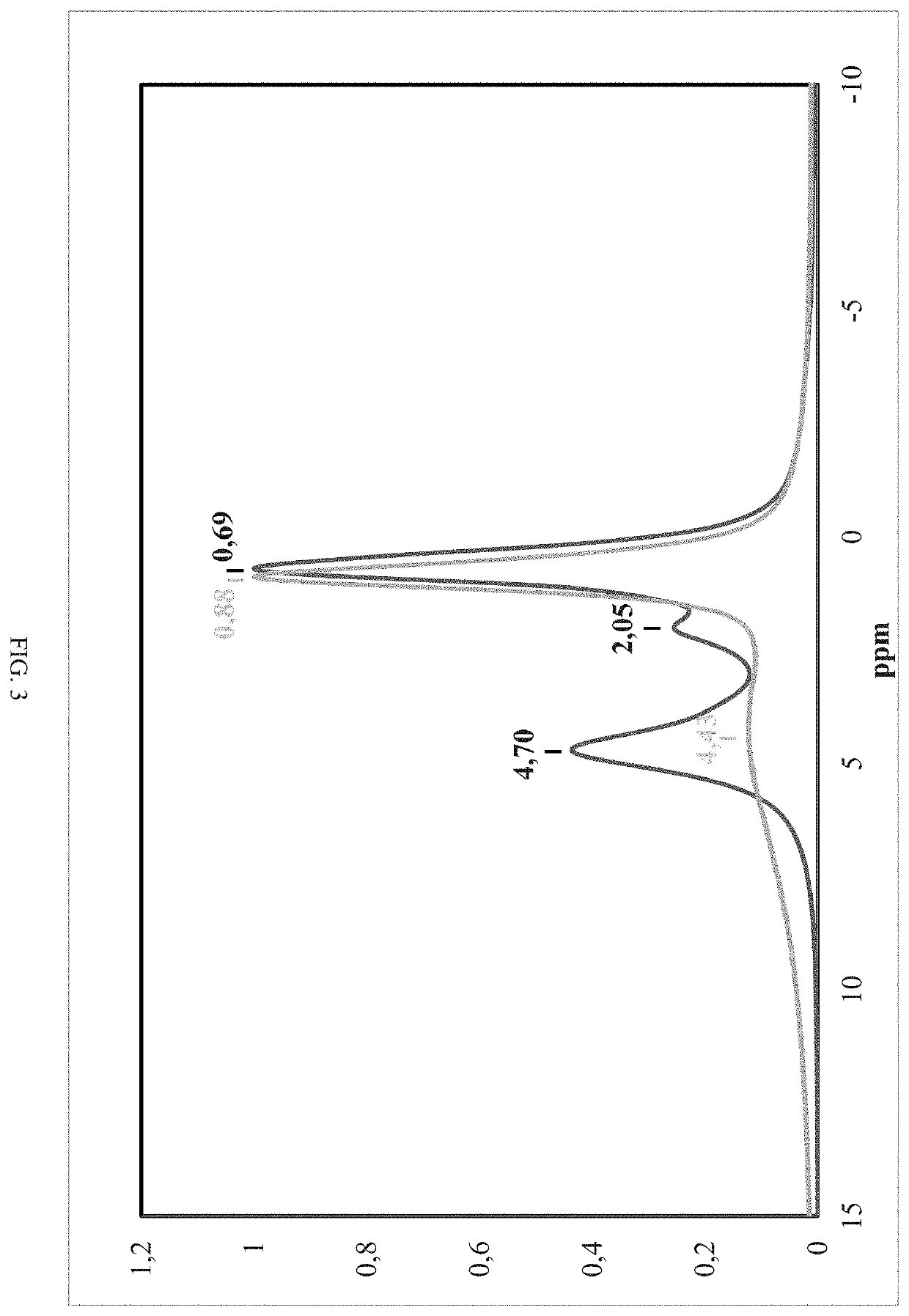Colored organic/inorganic hybrid materials and method for preparing same
a hybrid material and organic technology, applied in the direction of silicon compounds, antinoxious agents, other chemical processes, etc., can solve the problems of color organic compounds degrading, reducing their properties, complicated steps, etc., and achieve stable hybrid compounds , the effect of low adsorption capacity
- Summary
- Abstract
- Description
- Claims
- Application Information
AI Technical Summary
Benefits of technology
Problems solved by technology
Method used
Image
Examples
example 1
of the Hybrid Nanomaterial Composition Based on Synthetic Talc and Red Wine
[0409]40 milliliters of red wine are added at room temperature to a suspension of 1 g of nanotalc in 100 ml of pure water. The pink suspension is stirred under sonication for 5 minutes and then centrifuged at 14000 rpm for 20 min. It is noted that the supernatant is slightly colored which reflects the partial adsorption of the dyes of the wine on the mineral. The base consists of a pink paste. This paste can be dried in an oven (60° C. for 12 h) or by freeze drying or any other drying technique.
example 2
of the Hybrid Nanomaterial Composition Based on Synthetic Kaolinite and Red Wine
[0410]The same protocol was applied as in Example 1, using the synthetic kaolinite whose preparation is detailed above.
example 3
of the Hybrid Nanomaterial Composition Based on Synthetic Mica and Red Wine
[0411]The same protocol was applied as in Example 1, using the synthetic mica whose preparation is detailed above.
[0412]1.B.2. Tests
[0413]Characterization—Test No. 1: Adsorption Test:[0414]a) General Protocol
[0415]In order to demonstrate the high adsorptivity of synthetic minerals and the way in which organic molecules interact with talc, various adsorption tests have been carried out. In a beaker, a mineral in the form of an aqueous suspension is mixed with a dye dissolved in a solvent. If necessary, water is added so that the mixture is sufficiently liquid. The whole is then stirred and passed under ultrasound until the mixture is homogeneous and without visible agglomerate. The final step is to centrifuge the mixture at 9000 rpm for about 20 minutes. At the end of this, the mineral is found plated in the bottom of the pot surmounted by the supernatant. Therefore, if the mineral has completely adsorbed the ...
PUM
| Property | Measurement | Unit |
|---|---|---|
| thickness | aaaaa | aaaaa |
| thickness | aaaaa | aaaaa |
| particle size | aaaaa | aaaaa |
Abstract
Description
Claims
Application Information
 Login to View More
Login to View More - R&D
- Intellectual Property
- Life Sciences
- Materials
- Tech Scout
- Unparalleled Data Quality
- Higher Quality Content
- 60% Fewer Hallucinations
Browse by: Latest US Patents, China's latest patents, Technical Efficacy Thesaurus, Application Domain, Technology Topic, Popular Technical Reports.
© 2025 PatSnap. All rights reserved.Legal|Privacy policy|Modern Slavery Act Transparency Statement|Sitemap|About US| Contact US: help@patsnap.com



